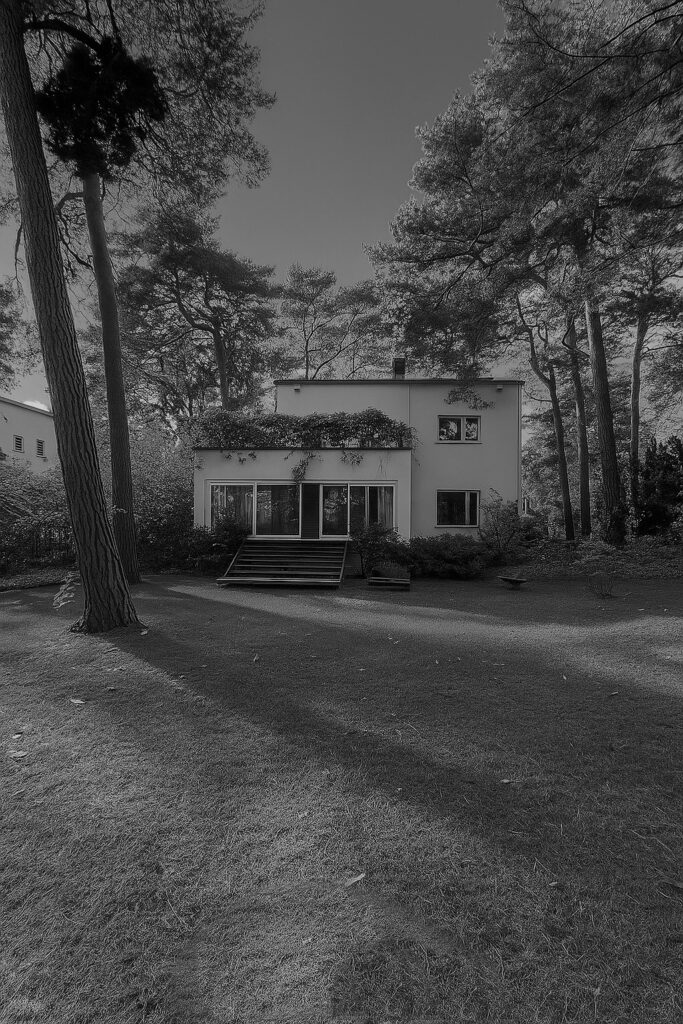
In Berlin-Zehlendorf, within the historically significant ensemble known as “Sommerfelds Aue”, stands a remarkably rare architectural artifact of early modernism: one of the first residential structures designed by Richard Neutra. These buildings constitute some of the very few examples of Neutra’s formative European oeuvre and thus occupy a crucial position in the trajectory of his subsequently celebrated international career.
The houses originated within the framework of the “Sommerfelds Aue” development, an ambitious and conceptually progressive residential project initially planned to comprise twelve single-family dwellings. Ultimately, only four of these buildings were realized – one of which is now being offered for sale.
From an architectural standpoint, the structure exhibits pronounced affinities with the Viennese Modernist tradition, reflecting in particular the theoretical and formal influence of Adolf Loos, under whom Neutra received decisive intellectual impetus during his studies in Vienna. The building’s restrained formal vocabulary, its disciplined spatial organization, and its renunciation of ornamentation exemplify the rationalist and anti-decorative principles central to Loos’s architectural doctrine.
Concurrently, the house manifests traces of Neutra’s early professional engagement in the Berlin office of Erich Mendelsohn, where he contributed to pioneering works of expressionist architecture. The synthesis of these influences – Loos’s austere functionalism and Mendelsohn’s dynamic spatial plasticity – endows the building with an architectural depth and complexity that exceeds its modest scale.
Today, the villas in “Sommerfelds Aue” are regarded as a significant cultural and architectural monument, marking the inception of Neutra’s mature design philosophy. It stands as an emblematic artifact of the transitional period in which European modernism moved toward a more rigorously functional, materially honest, and spatially articulated architectural language. As such, it constitutes a rare and invaluable document of Berlin’s architectural history in the 1920s.
For scholars and connoisseurs of modern architecture, cultural heritage, and historically significant residential design, this house represents not merely a dwelling but a primary architectural source – an embodiment of the intellectual and artistic conditions under which modernism was forged.